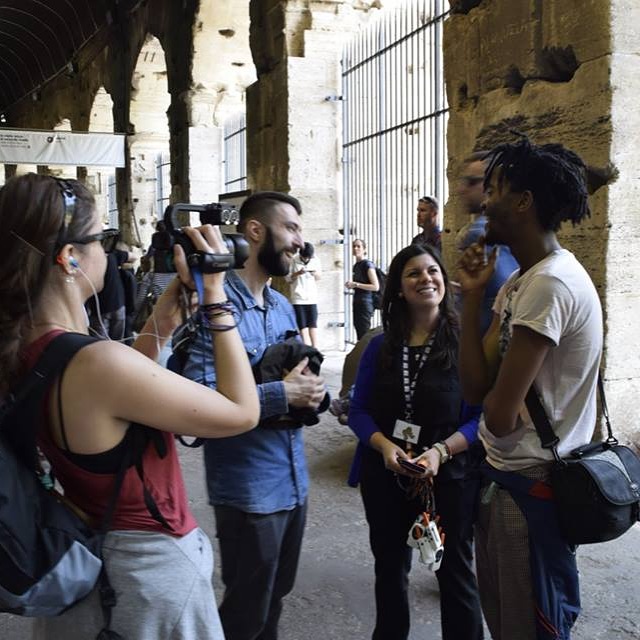Public art has become in recent years not only an alternative form of expression, but also a real stage with which artists confront and dialogue. We no longer speak of a conflict between an artwork that is by definition donated to the community and an artwork that is born to be sold under the rules of the market: artists more and more often move freely between these two options, until a few years ago considered in antithesis. Rome offers several examples of public art: from the fantastic intervention by William Kentridge Triumphs & Laments on the Lungotevere banks under Ponte Sisto, to the SanBa project that designed San Basilio’s public housing according to a specific urban redevelopment project, to the spontaneous open-air gallery that is flourishing in Corviale at the foot of the famous building called ‘Serpentone’, to arrive at interventions in the occupied realities such as the Tufello students’ house run by the Astra activists. ARP has made a journey to discover these realities together with the South African artists Skubalisto and Jordan Sweke participating in the residency in Rome in November and December 2017.
Both artists chosen this year by the ARP-Art Residency Project (created by the Centro Luigi Di Sarro with the contribution of MAECI and with the collaboration of Everard Read/CIRCA and RainbowMediaNPO) have an interest in the investigation of urban reality, as well it is the gentrification of the peripheral areas or redevelopment planned by social and housing policies, or even fertile ground of public artistic commission. Their investigation of the Roman reality has therefore often turned to those areas that could offer fertile inspirations. In parallel to the study that led to the realization of the exhibition REALTA’ IMMAGINARIE/IMAGINING REALITIES that was held at the Centro Luigi Di Sarro (30th November-14th December 2017), the two artists also wanted to bet on the public art front, realizing some works in the Roman suburbs: in Corviale (where they worked thanks to the hospitality of Alessandro Fornaci and the Laborintus Association and to the Prenestino, in a center for asylum seekers, a place of high symbolic value. In these years there is much discussion about what to do and how to give meaning to interculture: Art is one of the most universal means of communication and friendship between people.
“In the middle of the walk of our life, I found myself in a dark forest … (Dante, The Divine Comedy, Hell)”, the quote of the greatest Italian poet is not accidental and takes on meaning at the end of the long journey of meetings and crossings of routes that the two artists, guests of the ARP residence, have completed in the Capital. Jordan Sweke’s forest and the Skubalisto’s portraits tell of the past and the present. The immediate interest that both have shown for the urban socio-economic structure integrated with their artistic research has given rise to a very deep dialogue in their practice and with the inhabitants of the city. Dialogue that was realized with the final two-handed work performed in Corviale.


